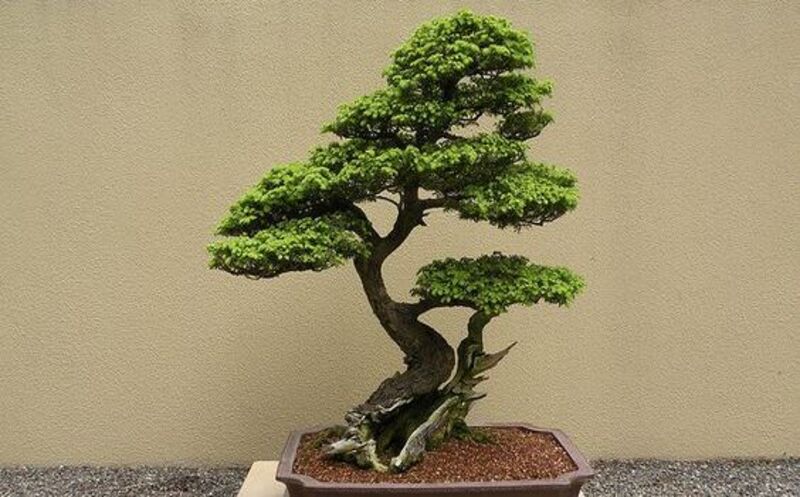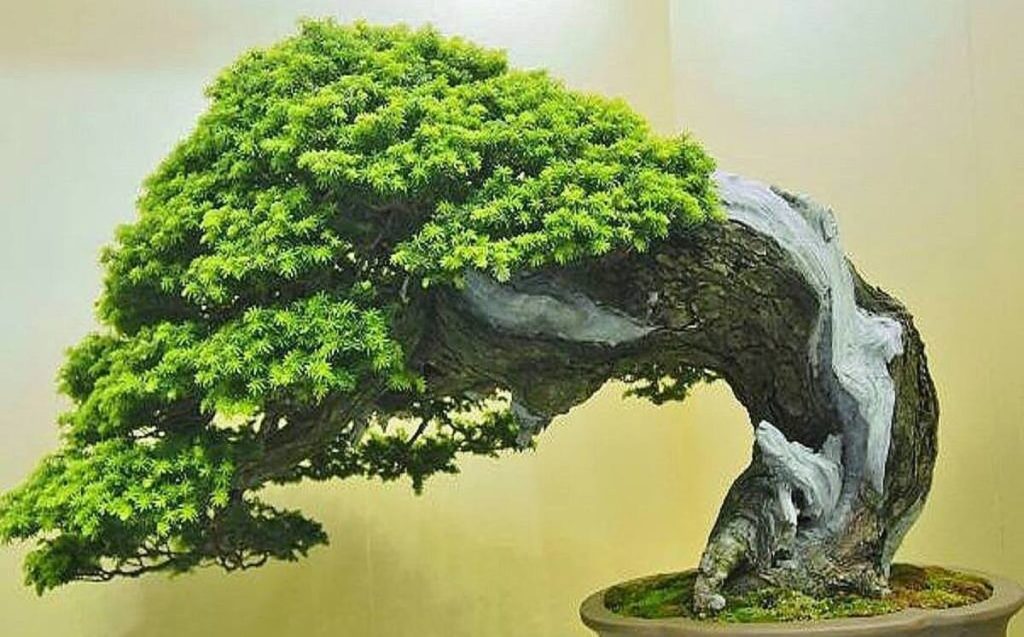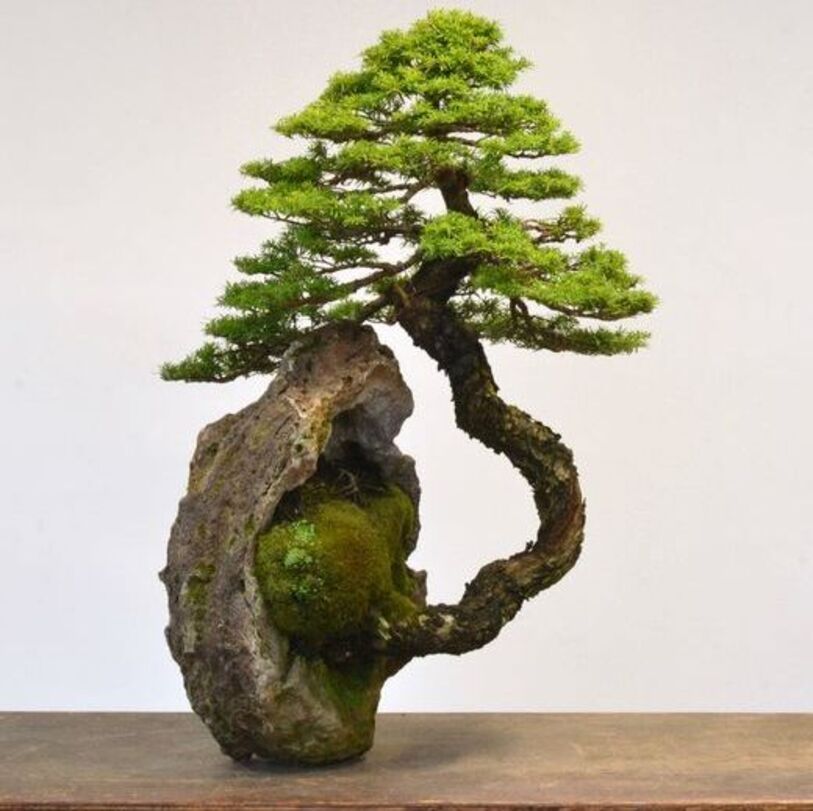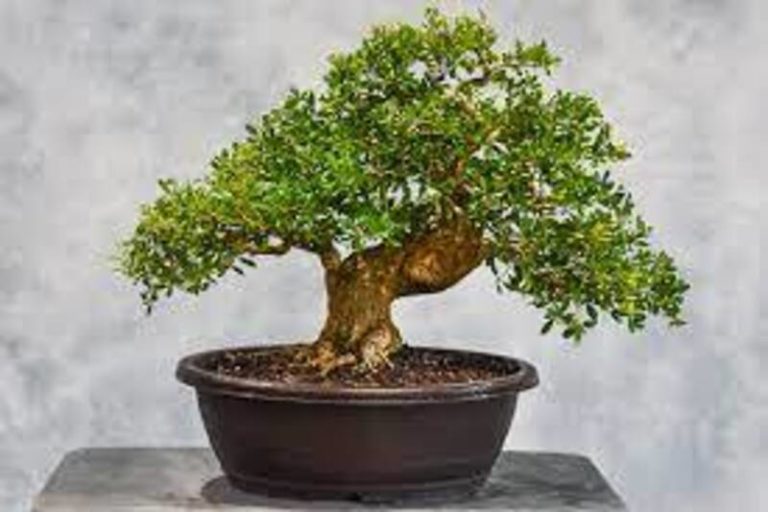Bonsai Hemlock: Capturing Nature’s Majesty in Miniature
Bonsai Hemlock, a miniature version of the majestic hemlock tree, has become a favorite among bonsai enthusiasts due to its graceful appearance and low maintenance requirements. This guide will lead you through the simple steps required to cultivate and maintain your own Bonsai Hemlock.
What is Bonsai Hemlock?
Bonsai Hemlock is a miniature hemlock tree that has been cultivated through the craft of bonsai. It involves shaping and training a juvenile or mature hemlock tree to develop in a compact pot while maintaining a full-sized appearance. This art form requires precise techniques for pruning, wiring, and cultivation. Like other bonsai trees, Hemlock bonsai is admired for its miniature beauty and the care it requires.
History and Origins of the Bonsai Hemlock
The history and origins of Bonsai Hemlock are profoundly rooted in the ancient Chinese art of bonsai, which was later refined in Japan. Bonsai, the practice of cultivating miniature trees such as the Hemlock, has a complex history spanning centuries.
Ancient Chinese Origins: The origins of bonsai can be traced to ancient China, where miniature landscapes were constructed in containers. These early forms of bonsai established the groundwork for the complex techniques currently employed in bonsai cultivation.
Development in Japan: During the Kamakura period (1185–1333), bonsai as it is known today began to develop in Japan. Monks and scholars from Japan studied and refined the techniques of bonsai cultivation, including those used for Hemlock trees. The Japanese elevated bonsai from a gardening technique to an art form by emphasizing harmony, balance, and aesthetic appeal.
Introduction of Hemlock: The first hemlock trees were probably brought to the world of bonsai in the early to mid-20th century. They are native to North America and Asia. Bonsai artists and fans began to play around with different types of Hemlock trees, changing the way they were traditionally grown to fit the specific needs of these trees.
Global Spread: With the popularity of bonsai growing around the world, Bonsai Hemlock gardening went beyond Japan and reached bonsai fans everywhere. Hemlock species like Tsuga canadensis (Eastern Hemlock) and Tsuga diversifolia (Japanese Hemlock) have been used to grow bonsai trees, and each has added to the variety of styles of bonsai hemlock trees.
Today, Bonsai Hemlock is still a popular choice among bonsai fans. Its beautiful leaves and the difficulty of growing a pine tree in a small space make it a great choice. The skill and care needed to shape Hemlock trees into beautiful bonsai trees show how bonsai cultivation has changed and grown over the ages.
Bonsai Hemlock and Their Symbolism
Bonsai trees, like Bonsai Hemlock, each have their own meanings that come from national or spiritual views. Although the meanings can be different from one society to the next, Bonsai Hemlock is usually linked to the following:
Longevity: Bonsai Hemlock, like other bonsai trees, symbolizes longevity and endurance. The careful and patient nurturing of a Bonsai Hemlock reflects the passage of time and the respect for the aging process.
Balance and Harmony: A well-designed and pruned Hemlock bonsai represents the harmony between nature’s elements. Its harmonious form embodies the balance between a tree’s branches, foliage, and roots, mirroring the pursuit of harmony in human lives.
Strength and Resilience: Hemlock trees are renowned for their resilience and ability to endure a variety of environmental conditions. As a symbol of resilience, Bonsai Hemlock serves as a reminder of fortitude in the face of adversity.
Contemplation and Patience: The art of bonsai, which includes Bonsai Hemlock, needs care, patience, and a lot of thought. A Bonsai Hemlock teaches its caretakers how to be patient and enjoy the benefits of careful, thoughtful work over time.
Connection to Nature: Like all bonsai plants, the hemlock bonsai tree is a small way to connect with nature. Bringing the beauty of nature into human places gives people a feeling of calm, peace, and connection to the natural world.
Adaptability: Hemlock trees are adaptable and can grow in a lot of different places. The adaptability of the bonsai hemlock plant reminds us of how important it is to be able to change and do well even when things get tough.
Majesty and Beauty: The graceful shape and lush leaves of the bonsai hemlock plant represent beauty and a respect of fine design. It reminds us of how beautiful nature is and how important it is to find beauty in the little things.
It’s important to keep in mind that even though these meanings are commonly linked to Bonsai Hemlock, they can be interpreted in different ways. Based on their own views and cultural backgrounds, different people may give these beautiful little trees their own meanings.

Characteristics of the Bonsai Hemlock
Bonsai Hemlock, which is made from the hemlock tree species, has unique qualities that make it a popular choice among bonsai fans. You can tell a lot about Bonsai Hemlock by these things:
Evergreen Foliage: Hemlock trees are evergreen conifers, which means that their lush green leaves stay on all year. In addition to making the Bonsai Hemlock look better, this trait gives the small tree a steady, bright color.
Needle-like Leaves: This tree has needle-like leaves that are usually small and flat. In Bonsai Hemlock, these leaves are carefully cut back and shaped to keep the tree’s small size while keeping the natural look of hemlock leaves.
Conical Shape: Hemlock trees grow in a cone or pyramid shape on their own. Bonsai Hemlock artists often emphasize this shape by carefully cutting back and wiring branches to keep the tree’s beautiful, tapering shape.
Fine Branches: The branches of hemlock trees are very thin and fragile. Bonsai Hemlock shows off these fine branches, which are carefully made to make a tiny tree that is balanced and looks good.
Bark Texture: Hemlock trees that are old have rough, scaly bark. In Bonsai Hemlock, the bark’s roughness and color are often brought out, which makes the tree look more natural.
Small Cones: Hemlock trees make small cones that are made of wood. Even though these tiny cones aren’t very noticeable on Bonsai Hemlock, they can make the tree look more real if they are grown.
Hardiness: Hemlock plants, like Bonsai Hemlock, can handle a lot of different conditions. Because they can survive in a range of situations, they can be used to grow bonsai in a number of different areas.
Aesthetic Elegance: Bonsai Hemlock has a beautiful, flowing look to it. It looks beautiful because of its delicate leaves, fine branches, and conical shape, which makes it a great choice for bonsai owners and fans.
Adaptability to Bonsai Techniques: Pruning, wiring, and shape are all bonsai methods that work well on hemlock trees. Because it can be used in different ways, bonsai artists can make models that are very complex and well-groomed.
All of these qualities make Bonsai Hemlock a popular choice in the world of bonsai, a style of art that captures the beauty of nature in small forms and shows off the skill and talent of those who practice it.
How to Grow Bonsai Hemlock
You need to be patient, pay close attention, and know a bit about gardening to grow Bonsai Hemlock. Here are the steps you need to take to grow a beautiful and healthy Bonsai Hemlock:
Selecting a Hemlock Tree:
Pick out a young, healthy hemlock tree from a reliable nursery or shop that specializes in bonsai. Look for a tree with a strong base, branches that are spread out, and healthy leaves.
Choosing the Right Pot:
Pick a bonsai pot that fits well and has holes in it for draining. The pot should be big enough to fit the tree’s roots, but not too big, because bonsai trees do best in small areas.
Preparing the Soil:
Use bonsai soil mix that drains well. For hemlock bonsai, it is often best to use an equal mix of akadama, pumice, and lava rock. Roots should not get too wet, so good draining is very important.
Repotting:
Repot your Bonsai Hemlock every 2–3 years to refresh the soil and prune the roots. This helps maintain the health and vigor of the tree.
Positioning the Bonsai:
You should put your Bonsai Hemlock somewhere where it will get limited sunlight. Hemlocks like some shade, especially when it’s hot outside. Keep the tree safe from cold weather, strong winds, and frost in the winter.
Watering:
When the dirt feels a little dry, give your Bonsai Hemlock a lot of water. Hemlocks can’t handle dirt that is too wet, so be careful not to water them too much. To keep the earth from moving, use a watering can with a tiny rose.
Pruning and Shaping:
Cut back the twigs often to keep the shape you want. When cutting, make sure the bonsai shears are clean and sharp. To bend branches, you can use wire, but be careful not to damage the hemlock’s delicate limbs.
Fertilizing:
You should give your Bonsai Hemlock a balanced liquid fertilizer every two to four weeks during the growing season (spring and summer). When the tree goes into dormancy in the fall and winter, cut back on or stop feeding it.
Protection from Pests and Diseases:
Bugs like aphids and spider mites should be kept an eye out for. Use natural treatments or insecticidal soap right away to get rid of any pests. Check the tree often for signs of disease and treat them right away if you find any.
Winter Care:
In winter, place your Bonsai Hemlock in a cool, protected area, such as an unheated garage or greenhouse. Water sparingly and protect the tree from freezing temperatures.
Regular Maintenance:
Bonsai Hemlock needs regular care. Check the tree often for signs of stress, and if you see any, change how much you water, prune, and fertilize it. To make sure your bonsai is healthy, pay attention to how it looks and how healthy it is overall.
You can grow a beautiful and healthy small version of this graceful tree by following these steps and giving your Bonsai Hemlock the care, it needs. Remember that growing bonsai is a constant process that needs time, effort, and a love of the art.
Displaying and Showcasing the Bonsai Hemlock
Showing off your Bonsai Hemlock is an important part of the bonsai experience. A well-presented Bonsai Hemlock not only shows off your skill but also makes a stunning display. For the best way to show off your Bonsai Hemlock, here are some tips:
Selecting the Right Bonsai Pot:
The style and size of your Bonsai Hemlock should match the pot you choose. Traditional pots with earth tones usually work well, but the choice is yours based on how you like things to look. Make sure the pot has the right holes for drainage.
Choosing a Display Stand:
Put your Bonsai Hemlock on a show stand or a bonsai table to make it stand out. It’s important that the stand is strong and looks good. For a real look, think about using raw materials like stone or wood.
Adding Accent Plants and Decorative Elements:
Add decorative plants, small rocks, or figurines to the show to make it look better. These should go well with the style and theme of your Bonsai Hemlock. To make the ground look more real, you can cover it with moss or small ground covers.
Setting the Right Background:
To bring out the details of your Bonsai Hemlock, put it against a neutral or contrasting background. A simple background, like a light-colored wall or fabric, can make the tree’s fine features stand out.
Proper Lighting:
Make sure that your Bonsai Hemlock gets enough light, either from the sun or a lamp. Most bonsai trees do best in light that comes from behind them. You could use small LED lamps to shine light on the tree and make it the center of attention in the show.
Regular Pruning and Maintenance:
Take good care of your Bonsai Hemlock. To keep the tree’s shape, it needs to be pruned and shaped regularly. Get rid of any leaves that are dying or turning yellow, and make sure the stems are balanced and the right size.
Participating in Bonsai Exhibitions:
You might want to enter your Bonsai Hemlock in local bonsai events and shows. Being able to get feedback, learn from other bonsai fans, and show off your skills to a larger crowd is great at these events.
Educational Signage:
If you’re showing off your Bonsai Hemlock in public places or at an event, you might want to add a small plate or sign with some information. Give information about the tree’s species, size, and any traits that make it stand out. This helps people understand how much work and skill went into making your tree.
Regular Care and Attention:
Check your Bonsai Hemlock often for signs of pests, diseases, or stress. Take care of any problems right away to keep the tree healthy and happy. Bonsai trees that are well taken care of look better.
By paying attention to these things, you can make an interesting display for your Bonsai Hemlock that shows off its beauty and skill and teaches and inspires other people who like the art of bonsai.
How to Care for and Maintain a Bonsai Hemlock
Caring for and maintaining a Bonsai Hemlock requires attention to detail and a consistent routine. Here are the essential steps to keep your Bonsai Hemlock healthy and vibrant:
Watering:
Bonsai Hemlocks need a steady supply of water, but they shouldn’t be left in soggy dirt. When the dirt feels a little dry to the touch, give the tree a lot of water. Root rot can be avoided by making sure that the pot can drain any extra water.
Light and Temperature:
It is best to put your Bonsai Hemlock where it can get limited sunlight. Hemlocks like some shade, especially when it’s hot outside. Keep the tree safe from high winds and cold weather. During the winter, keep the bonsai in a cool, safe place that will keep it from getting cold.
Humidity:
Hemlock plants like it when it’s wet. It’s important to mist the tree often, especially if you live in a dry area or are keeping the bonsai inside. To make the area around the tree more wet, you can also set the pot on a tray filled with water and stone chips.
Soil and Repotting:
Use bonsai soil that drains well. This type of soil is made up of things like akadama, pumice, and lava rock. Every two to three years in the spring, repot your Bonsai Hemlock. Trim the roots and add new soil. Repotting the tree helps it stay healthy and strong.
Pruning and Wiring:
To keep your Bonsai Hemlock in the shape you want, you need to prune it often. Cut back stems to keep things in order and help new plants grow. Branch shapes can be made with wire, but care should be taken not to hurt the tree. Check the wire often to make sure it doesn’t cut into the tree’s wood as it grows.
Fertilizing:
Every two to four weeks during the growth season (spring and summer), give your Bonsai Hemlock a balanced liquid fertilizer. When the tree is dormant in the fall and winter, cut back on or stop feeding it.
Protection from Pests and Diseases:
Bugs like aphids, spider mites, and scale insects should be kept a close eye on your Bonsai Hemlock close at hand. Use natural treatments or insecticidal soap to get rid of bugs right away. Always check the tree for signs of sickness, and if you see any problems, take care of them right away.
Winter Care:
Don’t water the tree as much in the winter, but make sure it doesn’t dry out totally. Put the tree somewhere cool and out of the way to keep it from freezing. Because the tree is dormant in the winter, don’t prune it too much.
Regular Evaluation and Maintenance:
Examine your Bonsai Hemlock frequently for indications of stress, disease, and parasites. Adapt your hygiene regimen as necessary. Maintain the vitality of your bonsai by observing its overall health and appearance, and addressing any problems immediately.
By adhering to these care instructions and providing your Bonsai Hemlock with the necessary attention, you can enjoy a healthy, flourishing miniature tree that exemplifies the elegance of this species.

Bonsai Hemlock Care Sheet
| Aspect | Care Tips |
|---|---|
| Watering | Frequency: Water thoroughly when the topsoil is slightly dry. Ensure proper drainage to prevent waterlogging. Indicator: Check soil moisture regularly, adjusting watering based on environmental conditions. |
| Light and Temperature | Light: Provide filtered sunlight; avoid direct harsh sunlight. Temperature: Keep in moderate temperatures; protect from frost. |
| Fertilizing | Seasonal Feeding: Use a balanced liquid fertilizer during the growing season (spring and summer). Frequency: Apply every 2-4 weeks. Avoid over-fertilizing. |
| Pruning and Shaping | Regular Pruning: Trim branches to maintain balance and shape. Wiring: Shape branches carefully using bonsai wire. Monitor and adjust wiring to prevent damage. |
| Repotting | Frequency: Repot every 2-3 years in spring. Trim roots and refresh soil. Indicator: Repot if roots outgrow the pot or the soil becomes compacted. |
| Pest and Disease Management | Prevention: Maintain cleanliness; inspect regularly. Natural Remedies: Use neem oil or insecticidal soap for pests. Prompt Action: Address any signs of diseases immediately. |
| Winter Care | Reduced Watering: Water sparingly. Avoid waterlogged soil during winter. Protection: Place in a cool, sheltered area; shield from frost. |
| Observation and Patience | Regular Inspection: Monitor for changes in foliage color, pests, or diseases. Patience: Bonsai development takes time; allow the tree to grow and mature naturally. |
Following these guidelines and paying close attention to your Bonsai Hemlock’s requirements will ensure that it thrives and stays healthy, allowing you to appreciate the artistic beauty of this miniature tree.
Conclusion
Growing a Hemlock Bonsai can be a rewarding and pleasurable experience. With the proper care and attention, it is possible to create a breathtaking living masterpiece that will bring the beauty of nature into the home. Therefore, roll up your sleeves, get your hands filthy, and embark on this enchanting voyage of bonsai cultivation!
FAQ:
Q: What is Bonsai Hemlock?
A: Bonsai Hemlock refers to a miniature version of the hemlock tree cultivated through the art of bonsai. It involves shaping and training a hemlock tree to grow in a small pot while maintaining the appearance and characteristics of a full-grown hemlock tree.
Q: Can I grow a Bonsai Hemlock indoors?
A: Yes, a Bonsai Hemlock can be grown indoors, but it requires adequate light, humidity, and care. Place it near a source of bright, indirect light, and consider using a humidifier or routinely sprinkling the tree to maintain humidity levels.
Q: How often should I water my Bonsai Hemlock?
A: When the subsoil feels barely dry to the touch, thoroughly water your Bonsai Hemlock Hemlock. Climate, container size, and tree size all influence the frequency of irrigation. Always examine the soil moisture before irrigation in order to avoid overwatering.
Q: When and how should I prune my Bonsai Hemlock?
A: Your Bonsai Hemlock should be pruned in the spring or early summer. Remove any deceased or undesirable branches to preserve the desired form. Utilize precise, spotless pruning shears and sterilize them properly to prevent disease.
Q: How do I protect my Bonsai Hemlock from pests and diseases?
A: Examine your Bonsai Hemlock regularly for signs of parasites and diseases. Use natural pesticides such as neem oil or insecticidal detergents. Maintain excellent hygiene and care practices to prevent problems and promptly treat any diseases that may occur.
Q: Can I wire my Bonsai Hemlock to shape it?
A: Yes, you can shape the branches of your Bonsai Hemlock with wire. Utilize bonsai wire with care so as not to harm the delicate branches. Regularly inspect and modify the wiring as the tree matures to prevent wires from cutting into the foliage.
Q: How do I fertilize my Bonsai Hemlock?
A: During the growing season (spring and summer), apply a balanced liquid fertilizer. Apply the fertilizer every two to four weeks, per the instructions on the product label. When the tree is inert in the autumn and winter, reduce or cease fertilizing.
Q: How long does it take for a Bonsai Hemlock to mature?
A: Bonsai Hemlocks take different amounts of time to grow up depending on their age, how big they were to begin with, and how well they are cared for. Growing bonsai takes a lot of patience, and it can take years for the tree to reach the right level of growth and beauty.
Q: Can I repot my Bonsai Hemlock anytime?
A: Once every two to three years, in the spring, you should move your Bonsai Hemlock to a new pot. You can renew the dirt, trim the roots, and keep the tree healthy by repotting it. Do not move the tree to a new pot in the winter or when it is blooming.
Q: Where can I display my Bonsai Hemlock?
A: You can put your Bonsai Hemlock on a shelf or a special table made just for bonsai indoors. If you put it outside, make sure it gets limited sunshine. Make sure you’re safe from cold weather and strong winds. You might want to enter your tree in bonsai shows so that more people can see it.
Also Read:









